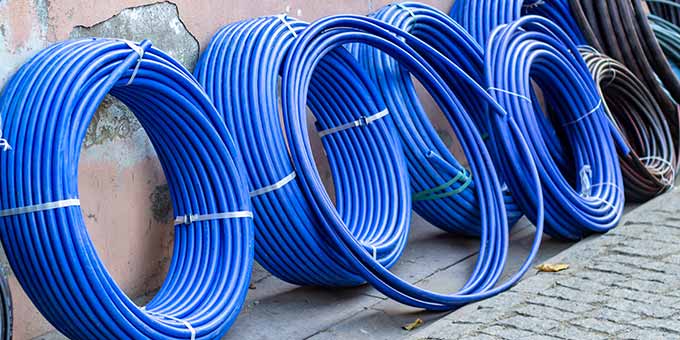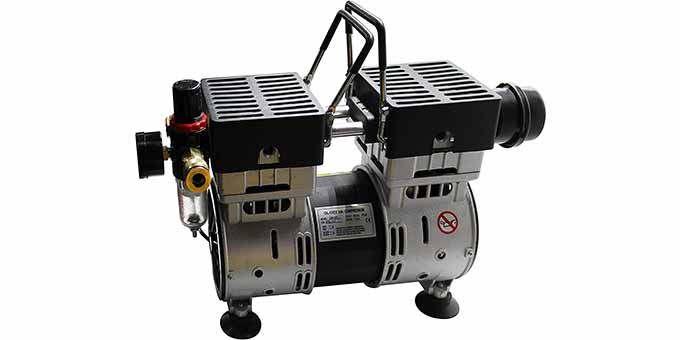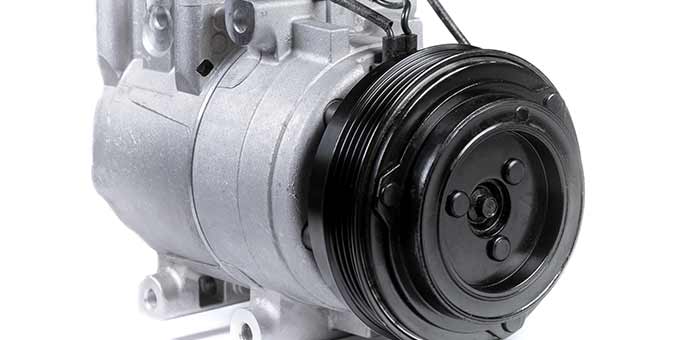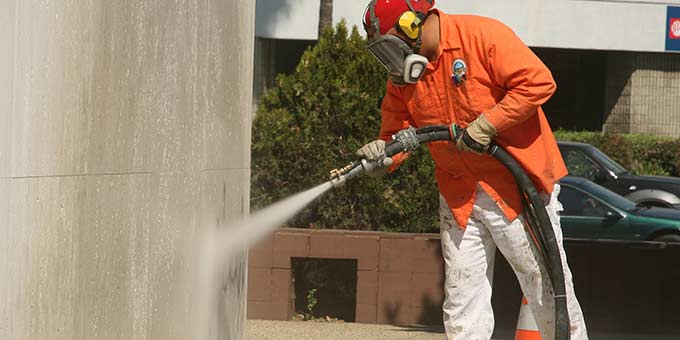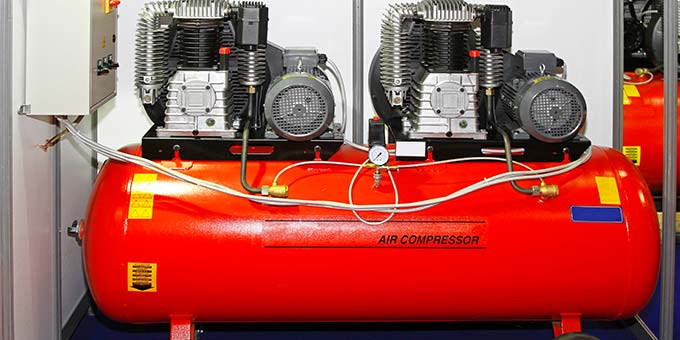In any workplace, an air compressor is an essential tool. An air compressor is useful for a variety of tasks, from inflating a flat tire to constructing a shed frame. Despite this, an air compressor is only as effective as its hose, and selecting the appropriate one can be difficult. Air compressor hoses are available in a variety of sizes and materials, each tailored to a certain budget and use.
This article deconstructs the world of air compressor hoses by highlighting the aspects to consider before purchasing. Keep reading to learn how to choose the best air compressor hose for the job.
What Kind of Air Compressor Hose Is the Best?
Between the type of material and characteristics, there are various factors that result in the best air compressor hoses.
While rubber is the most common material used in air hoses, it isn’t the best option for every air compressor. In terms of cost and function, the various types of hoses you can choose between are:
- Rubber
- Hybrid
- PVC
- Nylon
- Polyurethane
Before purchasing a new air compressor hose, examine the hose’s connector style and kink resistance, in addition to the types of material.
Connectors Compressor Hoses
Compressor hoses feature threaded ends on which quick-release connectors can be attached. Quick-release connectors allow the user to swap between power tools quickly. To suit the size of the hose and the accompanying tool attachment, quick-release connections are available in 1/4-inch, 1/8-inch, and 1/2-inch sizes. Aluminum and brass are used to make connectors. Brass outperforms aluminum in terms of wear and corrosion resistance, as well as creating a tighter connection.
Coiling Capability
Air hoses can coil in one of two ways: conventional or recoil. A normal hose has no coils or bends and can be unrolled and stretched flat for maximum length or coiled for storage. Rebound hoses have minor twists in them that allow the hose to recoil backward when the user releases it.
Recoil hoses are great for working in a workshop or garage where a hose could cause tripping hazards or get in the way. The hose is long enough to be used for painting or pumping tires, but it automatically withdraws when not in use. Standard hoses, on the other hand, lie flat and have a greater max length, making them perfect for nailer use.
Pressure Rating
The maximum pressure rating of air hoses is the number of pounds per square inch of pressure the hose can bear without breaking. Its maximum operating pressure, as well as the burst pressure, are usually listed by the manufacturer. Additionally, the hose’s working pressure is the highest PSI it can sustain for an extended period of time.
Inflating a car tire, for example, requires a hose with a greater PSI rating. Hoses with a higher pressure also survive longer. The operating psi of most air compressor hoses lies between 200 and 300 PSI, including a burst pressure four times that.
Temperature Range
Consider how well an air hose can withstand temperature variations in terms of flexibility. Rubber air hoses, for example, may withstand temperatures as low as -40 degrees Fahrenheit while remaining flexible. When the temperature lowers, rubber and polyurethane hoses retain their suppleness, whereas PVC (and hybrid hoses) get less flexible and are difficult to operate.
Twisting and Kink Resistance
Air compressor hoses, like garden hoses, can kink and twist as they’re uncoiled and pulled, causing a delay in airflow. These kinks can result in awkward air pressure drops at the hose’s end, or the hose may rupture at the kink. Rubber air hoses are more resistant to kinking than any other variety. Polyurethane and hybrid hoses, albeit not as kink-resistant as rubber, withstand twisting and kinking; nylon and PVC hoses, on the other hand, kink quickly.
Which Is Better: PVC or Rubber Air Hose?
PVC air hoses have a PVC-compound inner tube as well as a polyester spiral outer tube, making them the most cost-effective air hoses in the industry. PVC hoses are more challenging to uncoil and coil than rubber air hoses since they are firmer.
Furthermore, PVC hoses are notorious for keeping their shape, making it challenging, if not impossible, to lay flat. In cooler temperatures, they might kink and become rigid. PVC hoses, which are frequently provided free with air compressors, are tough to deal with due to these characteristics, causing many DIYers to switch to different materials.
The most popular and widely available type of air compressor hose is a rubber compressor hose. These air hoses are heavy and long-lasting, made of synthetic rubber enhanced with braided or spiraling yarn. They barely leak and are rather simple to repair if they do.
Rubber air hoses are simple to work with as they don’t coil or kink easily at any temperature. Rubber, on the other hand, is a sticky substance that collects a lot of dirt when pulled across your garage floor. Additionally, rubber hoses are also more costly than other types of air hoses.
What Is a Hybrid Air Hose? Is a Hybrid Air Hose Better than a Rubber One?
Rubber, PVC, and polyurethane are used to make hybrid hoses. This potent mix gives them characteristics similar to rubber hoses while being lighter in weight, making hybrid hoses easier to deal with. Hybrid hoses are also less sticky than rubber hoses, so they don’t accumulate as much dirt.
Although hybrid air compressor hoses are quite resilient, they are prone to kinking after prolonged usage. Hybrid air hoses are great for all types of operations, whether utilized in a garage or on top of a 15-foot ladder, thanks to their flexibility and lightweight.
What Is a Nylon Air Hose?
Nylon hoses are lightweight and simple to coil, and they’re much less expensive than rubber hoses. However, nylon is prone to kinking and isn’t very long-lasting. These hoses have a lower maximum pressure (usually approximately 100 psi) than other materials, making them ideal for light-duty tasks like powering a finish nailer or pneumatic staple gun.
What Is a Polyurethane Air Hose?
Polyurethane hoses resemble PVC hoses in looks but perform far better. They’re flexible and light, with a smooth outer layer that lets them glide across practically any surface with ease.
These characteristics make them an excellent choice for operations requiring both weight distribution and freedom of movement, such as framing nailers or pneumatic roofing. Because polyurethane hoses are less flexible than rubber hoses, they are more prone to kinking. Additionally, polyurethane hoses are one of the most expensive forms of air compressor hoses, next to rubber.
What Is the Difference Between a 1/4 and 3/8 Air Hose?
The diameter of an air hose impacts the amount of air it can deliver. Hoses are available in diameters ranging from 0.2 to 0.5 inches (1/4 to 1/2 inches). The proper one for the job is determined by the air compressor’s size.
Moreover, the amount of air a compressor may deliver per cubic foot per minute is measured in cubic feet per minute (CFM). A low-CFM compressor must utilize a smaller-diameter air compressor line, while a high-CFM compressor must utilize a larger-diameter hose. A 3/8-inch air hose is the most typical size.
How Do I Know What Size Air Hose I Need?
The hose length and diameter are crucial in determining the size of the air hose you need.
The hose’s length influences which tasks it can do and how much pressure it can withstand. Hoses for air compressors typically range in length from six to 50 feet.
Roofing, framing, painting, and other operations that require the user to go a significant distance from the air compressor necessitate longer hoses. The length of an air compressor’s hose (together with its internal diameter) influences how much pressure it can deliver. As the hose travels from the compressor to its attachment, the pressure decreases.
Shorter hoses are ideal for applications requiring high pressures and long periods of use, such as pumping a huge truck tire. Longer hoses, on the other hand, are excellent for brief, forceful bursts of air, like when utilizing a framing nailer.
Tips for Using an Air Tool
While the condition of an air compressor hose is important for its performance, knowing how to use and care for it properly can help you get the most bang for your dollars. The couplers that link the compressor, hose, and attachments are critical, so keep them clear of debris that might cause leaks or block the hose. Think about buying a filter attachment that connects the hose to your compressor to eliminate condensation from your hose and stop mist from spraying out of air tool attachments in humid circumstances.
When operating at a height, hoses can get quite hefty. Hang the hose on a hook or scaffold to relieve part of the weight. When utilizing an air hose, safety is also vital. When you uncouple a hose while it’s under pressure, it might flail dangerously when the air escapes.
The Bottom Line
We took into account a number of essential elements when compiling this comprehensive guide of air hoses. The best air hoses are those that have the ability to coil when storing it, stay flat, and avoid kinking. These characteristics play a key part in their ease of use.
Durability is also something that needs to be considered as a good air compressor hose must be able to withstand being pulled around a tough work environment. Additionally, the hose’s maximum working pressure and bursting pressure are key elements.


